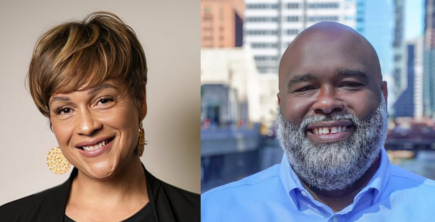
Our Community
The Pew Research Center released their report, “The Rise of Asian Americans,” today, June 19, 2012 – the 30th anniversary of the fatal beating of Vincent Chin at the hands of Ronald Ebens and Michael Nitz, which led to Chin’s death four days later and only a small fine for Ebens and Nitz (neither of whom have spent a single day in jail, for the record). In some ways, I couldn’t think of a more ironic juxtaposition that highlights that we still live in an age where there is xenophobic fear of an “Asian Invasion” and in which the stories of us, as individuals in and beyond the numbers, still go largely untold. The model minority myth still prevails, hiding the real issues that our communities face and erasing our personal experiences, which has deep and devastating consequences for racial, economic and social justice work in the United States.
According to the “headlines” of the report and news release, Asian Americans are the highest-income, best-educated and fastest-growing racial group in the United States, as demonstrated by Census data and telephone surveys conducted among over 3,500 Asian Americans (out of more than 14.6 million total, for reference). Sadly, this report highlights and confirms what many wrongly believe to be true about us – that we all (1) are pretty much the same, regardless of ethnicity, class, etc., (2) are just fine and, thus, (3) have more in common with whites than other people of color and, thus, (4) don’t face any discrimination or racism. But other data and anecdotes illustrate that this is not the common case or attitude, and support the case for always digging deeper for the stories behind the data.
Note: While the numbers do show a particular economic and social mobility, that trend must be understood in the important context of immigration quotas, preferences and enforcement, which historically and currently leads to a selective bias towards people who are better educated and trained to work in occupations and sectors that have greater labor needs. Pair that with our nation’s dark history of indentured servitude, internment and anti-Asian propaganda and hate crimes, and it’s no surprise that there is an attitude of assimilation at all costs. In the case of Vincent Chin, these factors led to his tragic death. Additionally, while the report also includes other information, the framing and language of the survey questions reveal a particular bias towards stereotyped views of Asian Americans (e.g., asking respondents about their attitudes towards parenting, as the report explicitly relates to the Tiger Mom image).
Some other data counterpoints to consider:
– Asian Americans are most bullied in schools (54% reported being bullied in the classroom, compared to 38.4% for African Americans, 34.4% for Hispanics, and 31.3% for whites);
– 12.6% of Asian American live below poverty, compared to the average of 12.4%, with significant rates in the Hmong (37.8%), Cambodian (29.3%), Laotian (18.5%) and Vietnamese (16.6%);
– 30-31% of Asian Americans reported incidents of employment discrimination, compared to 26% of African Americans, the next largest group; and
– Asian American have experienced the largest percentage decline in homeownership of any racial group.
– Related to philanthropy, Asian Americans are only 1% of foundation CEOs/presidents, and less than 1% of grant dollars target Asian communities (compared to us being almost 6% of the total US population).
From my own personal experience and the stories of countless of other Asian Americans – including people I know, but mostly those I do not have any relationship with – our encounters with racism and discrimination are vast and unacknowledged. On paper, I reflect the Pew report; my parents came from Taiwan to the United States in the early 1970s to attend graduate school, worked as engineers, and were able to provide a comfortable living for me and my two sisters. I, myself, have a graduate degree (paid for, in part, by my parents), am employed with a good salary, and have the privilege of living in a community where there are many people who look like me. However, I also live the darker side of the data; I was verbally and physically bullied in elementary, middle and high school and college, have struggled with bouts of depression in my teen and adult life, have worked with low-income Asian immigrant families, some of whom lived in derelict SROs (single room occupancy units), and do not have many AAPI peers in philanthropy who are in positions to make organizational-level decisions crucial to asset distribution in the field and our communities.
The Asian American community, like other new majority communities, is at a crucial reflecting point – what progress has been made, and where do we still need to go? Thirty years after the story of Vincent Chin galvanized our community, I’m reluctant to say that I’m at a loss for an answer to the first part of the question. It’s not that I don’t believe things haven’t gotten better – I just feel like it’s too soon to determine how much of what progress has been made will be sustained. But the beauty of it is that I don’t feel like we need to answer that before we work on the second. With all that we (should) know about the real stories of such a diverse group of people, I stay committed to doing what I can towards the larger goal of racial justice at Tides and Hyphen. As I lead Tides’ work in predictive philanthropy, I’m always searching for what’s really going on behind the data, and finding ways that numbers can be used for good, as a tool to get to something more meaningful. Start with social justice, follow with data, and we’ll already be better off.

Read the stories and hear the voices of social change leaders fighting for justice.